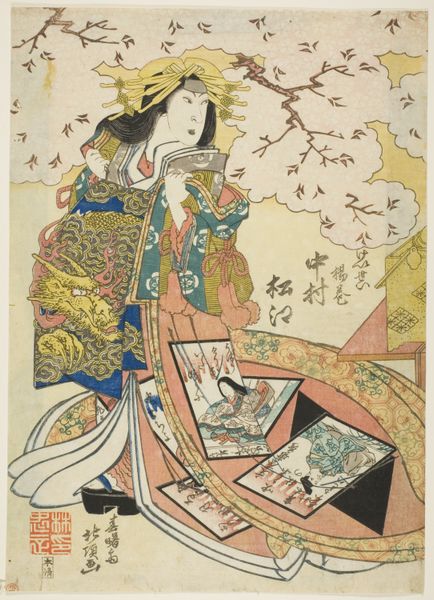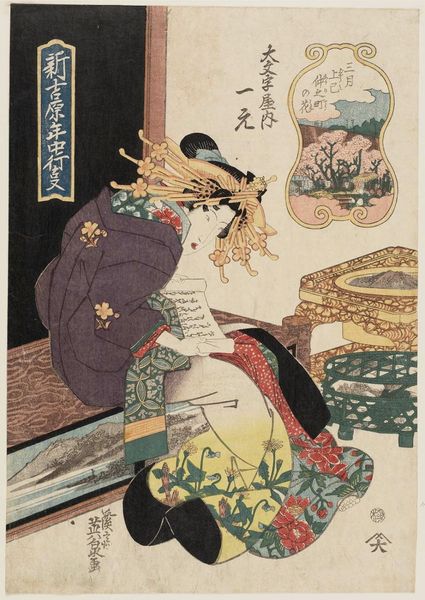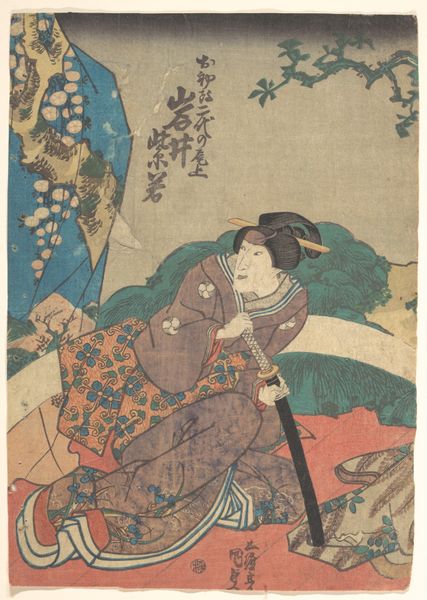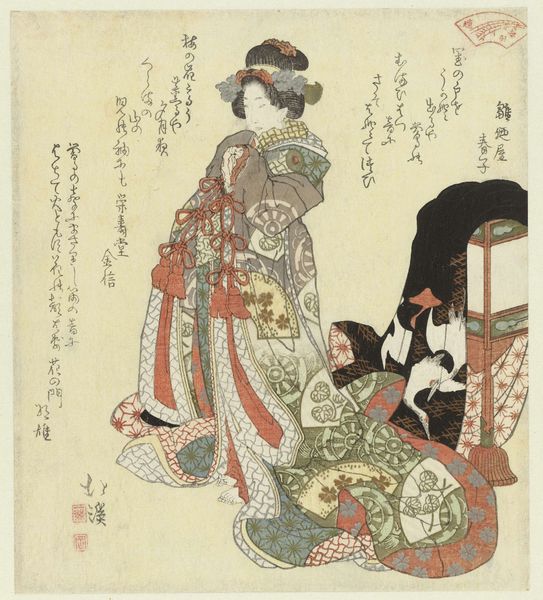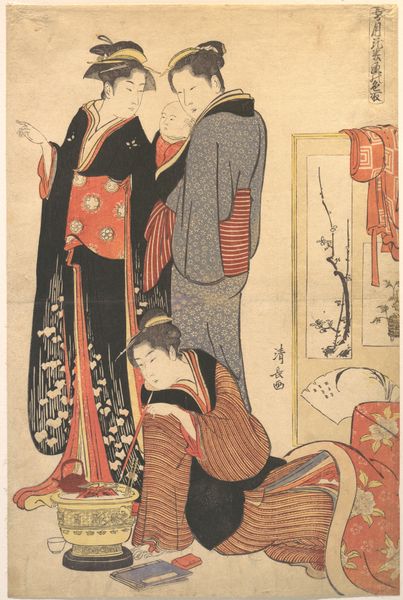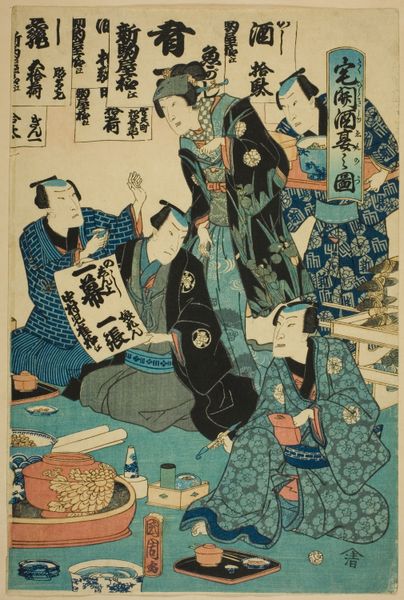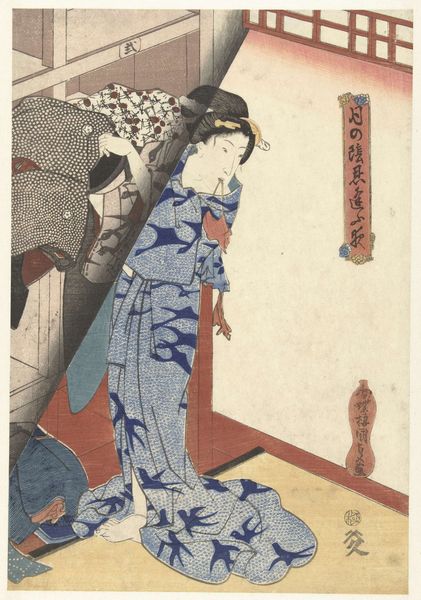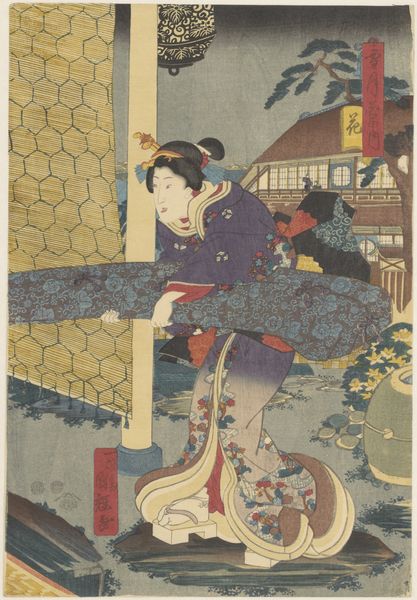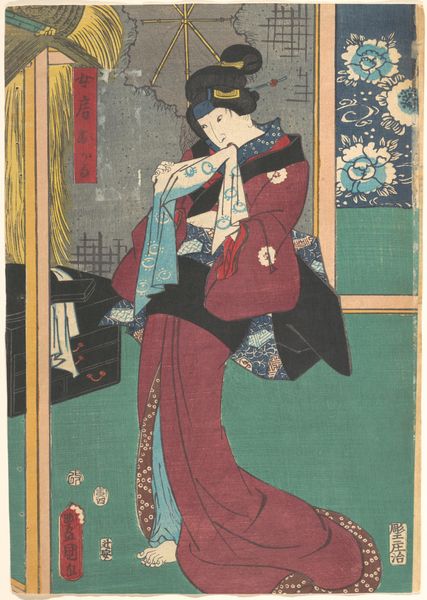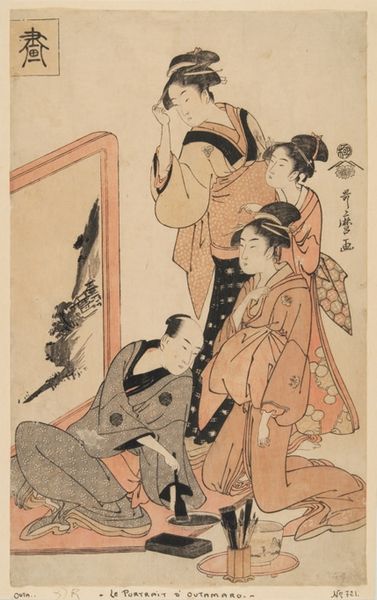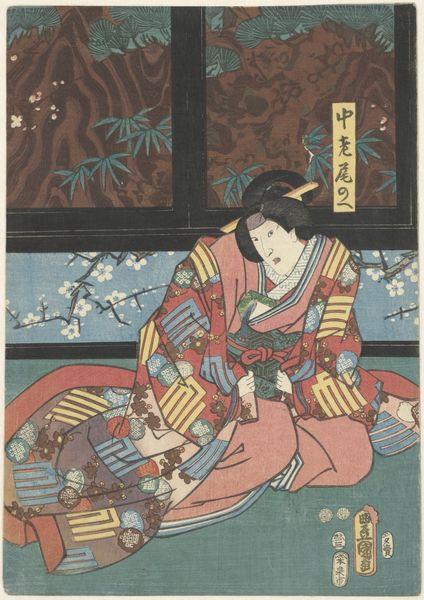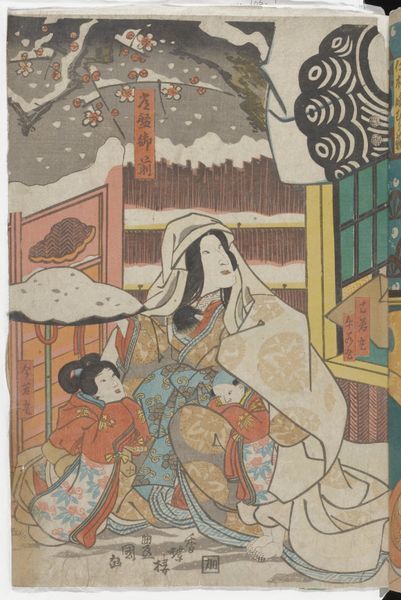
silk, print, woodblock-print
#
portrait
#
toned paper
#
narrative-art
#
silk
# print
#
asian-art
#
ukiyo-e
#
figuration
#
woodblock-print
#
watercolour illustration
#
genre-painting
#
watercolor
Dimensions: height 371 mm, width 255 mm
Copyright: Rijks Museum: Open Domain
Curator: Welcome. Before us is "Prins Genji en hofdame," a woodblock print created by Utagawa Kunisada between 1851 and 1853. Editor: It’s striking, immediately creating a feeling of enclosed intimacy, but also a bit staged. The contrast of the dark blues and whites draws my attention, though the space feels strangely flat. Curator: The flattening effect you observe is characteristic of the Ukiyo-e style, favoring decorative pattern and planar arrangements over deep perspective. Observe how the lines demarcate each distinct element; notice how pattern repeats both locally on fabrics and across the field of view between wall-covering and textile design. Editor: Yes, there’s almost a coded language in how these patterns overlay. Looking closer, the butterfly motif on the standing figure's kimono seems deliberately placed—a visual marker of transformation, or perhaps fleeting beauty, juxtaposed against the domestic scene. Curator: Precisely. Butterfly imagery, prevalent during the Edo period, signaled metamorphosis, yet its symbolism extends further when we consider its paired existence within courtly themes; the artist orchestrates signifiers on multiple registers simultaneously to produce this composite iconographic arrangement. Editor: That's quite a sophisticated weave of references. And what of the woman at the table, apparently writing? Is she a mere observer or a participant in this symbolic play? Curator: The seated figure’s location draws our eye; further emphasized through tonal value via application of deeper blue to the fabrics that dress her, inviting interrogation around her perceived role as mediator connecting our subjective perspective onto larger culturally constituted symbol systems within East Asian expressive tradition.. Editor: Fascinating. So, beyond its surface appeal, the artwork acts almost as a visual puzzle reflecting societal nuances and artistic traditions during the Edo era. Curator: A puzzle indeed. Each visual element, precisely rendered within a compositional framework, provides insights into a historical moment; yet transcends fixed meanings offering generative grounds fertile enough promote perpetual interpretative possibilities Editor: I find myself wanting to linger longer, unpacking its layered symbols. A great invitation to cultural and art history study. Curator: Indeed; reflecting cultural memory through patterns – leading inevitably toward rich reflections via aesthetic perception; hopefully enabling prolonged reflection now onwards.
Comments
No comments
Be the first to comment and join the conversation on the ultimate creative platform.

